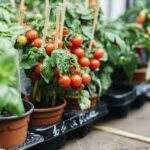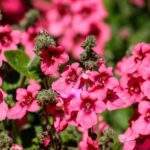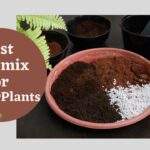Kicking off with 10 Container Gardening Tips for Growing Vegetables at Home, this article delves into the world of container gardening, exploring the essential tips and techniques for successful vegetable cultivation right at home. From selecting the right containers to harvesting and maintenance, this guide covers everything you need to know to create a thriving container garden.
As we unravel each tip, you’ll gain insights into the benefits of container gardening, the best vegetables to grow, soil preparation, watering techniques, sunlight requirements, pest management, and more. Whether you’re a beginner or an experienced gardener, these tips will help you maximize your vegetable yield in limited spaces.
Introduction to Container Gardening
Container gardening is a method of growing plants in pots, containers, or other confined spaces rather than planting them directly in the ground. This approach offers numerous benefits, especially for those looking to grow vegetables at home. Growing vegetables at home has become increasingly popular in recent years due to various reasons such as the desire for fresh and organic produce, the convenience of having a garden at home, and the satisfaction of being self-sufficient.
Container gardening provides an excellent solution for individuals who may not have access to a traditional garden or who have limited outdoor space.
Advantages of Container Gardening
- Flexibility in Placement: Containers can be positioned anywhere with access to sunlight, making it easier to move plants around to optimize growing conditions.
- Control over Soil Quality: You can choose the specific soil mix for each plant, ensuring optimal nutrient levels and drainage.
- Weed and Pest Management: Container gardening can help reduce the risk of weeds and pests compared to traditional gardening, allowing for easier maintenance.
- Accessibility: The raised nature of containers can make it easier for individuals with physical limitations to tend to their plants.
- Season Extension: Containers can be brought indoors during colder months, extending the growing season for certain vegetables.
Selecting the Right Containers
When it comes to container gardening, choosing the right containers is essential for the success of your vegetable plants. The type, size, and material of the containers can greatly impact the growth and health of your vegetables.
Best Types of Containers
- Terra cotta pots: These are a popular choice for container gardening as they are porous and allow for good airflow to the roots.
- Plastic containers: Lightweight and affordable, these containers come in various sizes and are easy to move around.
- Fabric grow bags: These containers are breathable, promote good drainage, and prevent overwatering.
Container Size and Material Impact
- Size: Larger containers provide more room for root growth and retain moisture better than smaller containers. Choose a size that suits the specific vegetable you are growing.
- Material: Different materials like plastic, clay, wood, or metal can affect the temperature of the soil. Plastic containers retain moisture well, while clay pots dry out faster and are better for plants that prefer drier soil.
Choosing Based on Space and Sunlight
- Consider the available space on your balcony, patio, or windowsill when selecting containers. Opt for vertical planters or hanging baskets if space is limited.
- Take into account the sunlight requirements of your vegetables. Place sun-loving plants in containers that receive at least 6-8 hours of sunlight per day.
Choosing the Right Vegetables
Choosing the right vegetables for your container garden is essential to ensure a successful harvest. Consider factors such as space, sunlight, and compatibility when selecting which vegetables to grow in containers.
Vegetables that Thrive in Container Gardens
- Tomatoes: Compact varieties such as cherry tomatoes are excellent for container gardening.
- Peppers: Bell peppers and chili peppers are well-suited for growing in containers.
- Lettuce: Leafy greens like lettuce are perfect for small spaces and can be easily grown in pots.
- Herbs: Basil, parsley, mint, and other herbs thrive in containers and can be grown together.
- Radishes: Fast-growing vegetables like radishes are ideal for container gardens.
Factors to Consider When Selecting Vegetables, 10 Container Gardening Tips for Growing Vegetables at Home
- Size of the plant: Choose vegetables that are compact and do not require a lot of space to grow.
- Sunlight requirements: Ensure that the vegetables you choose can thrive in the amount of sunlight available in your location.
- Watering needs: Consider the watering needs of the vegetables and ensure they can be easily maintained in containers.
- Companion planting: Some vegetables grow well together and can benefit each other in container gardens.
Companion Planting in Container Gardens
- Tomatoes and basil: Planting basil near tomatoes can improve the flavor of the tomatoes and deter pests.
- Carrots and onions: Carrots and onions are compatible companions and can be grown in the same container.
- Lettuce and radishes: Planting lettuce and radishes together can maximize space and create a visually appealing container garden.
Preparing the Container and Soil
When it comes to container gardening, preparing the container and soil properly is crucial for the success of your vegetable plants. The right container and soil mix can make a significant difference in the growth and productivity of your vegetables.
Step-by-Step Guide to Preparing Containers
- Choose containers with good drainage holes at the bottom to prevent waterlogging.
- Clean the containers thoroughly with soap and water to remove any dirt or residue.
- Fill the bottom of the container with a layer of small stones or broken pottery pieces to improve drainage.
- Fill the container with a high-quality potting mix, leaving some space at the top for planting.
Importance of Good Soil for Vegetable Growth
Good soil is essential for the healthy growth of vegetables in containers. It provides nutrients, proper aeration, and drainage for the plants to thrive. Without good soil, your vegetables may struggle to grow and produce a bountiful harvest.
Tips for Selecting the Right Soil Mix
- Choose a well-draining potting mix specifically formulated for container gardening.
- Avoid using garden soil, as it may compact in containers and hinder root growth.
- Look for a soil mix that contains ingredients like peat moss, perlite, and vermiculite for optimal aeration and moisture retention.
Adding Amendments for Container Gardening
- Consider adding compost or organic matter to improve soil fertility and structure.
- Use slow-release fertilizers to provide a steady supply of nutrients to your vegetable plants.
- Avoid over-fertilizing, as it can lead to nutrient imbalances and damage to the plants.
Planting and Watering Techniques: 10 Container Gardening Tips For Growing Vegetables At Home
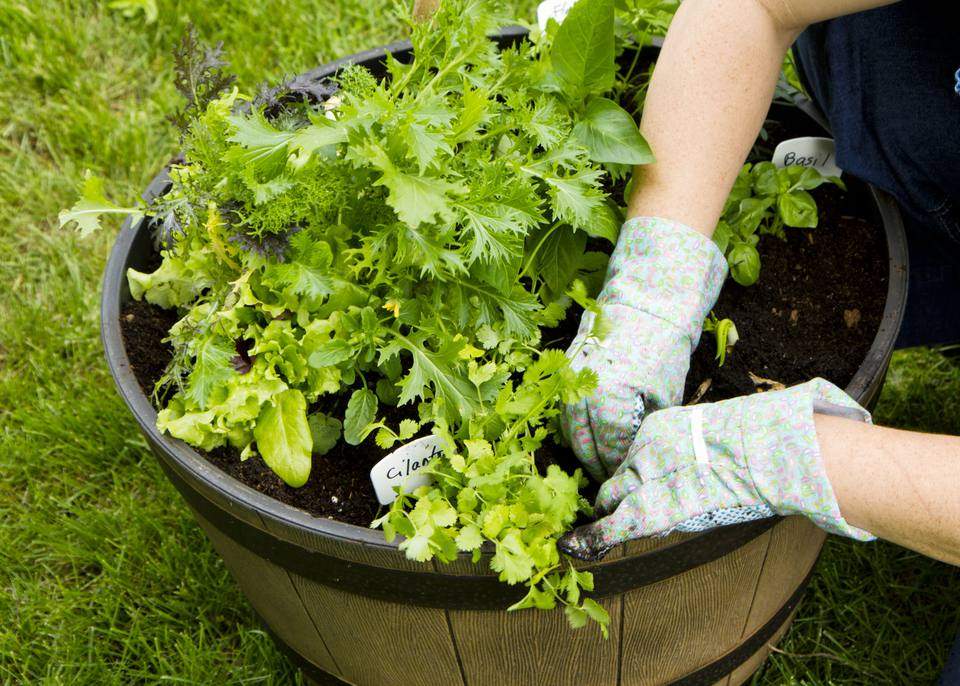
When it comes to container gardening, proper planting and watering techniques are crucial for the success of your vegetable plants. Ensuring that your plants receive the right amount of water and are planted correctly can make a big difference in their growth and yield.
Planting Vegetables in Containers
- Choose a container that is large enough for the specific vegetable you are planting. Make sure it has drainage holes at the bottom to prevent waterlogging.
- Fill the container with a good quality potting mix, leaving enough space at the top for planting the seedlings or seeds.
- Plant your vegetables at the appropriate depth, following the instructions on the seed packet or plant label. Pat down the soil gently around the plant roots.
- Water the newly planted vegetables thoroughly to help them settle in their new environment.
Watering Frequency and Drainage
- Check the moisture levels in the soil regularly by inserting your finger into the soil. Water when the top inch feels dry to the touch.
- Avoid overwatering, as it can lead to root rot and other issues. Ensure that the container has proper drainage to prevent water from accumulating at the bottom.
- Water in the morning or evening to reduce evaporation and ensure that the plants have enough moisture throughout the day.
Using Self-Watering Containers or Irrigation Systems
- Consider using self-watering containers or irrigation systems to maintain consistent moisture levels in your vegetable containers.
- Self-watering containers have a reservoir at the bottom that allows the plants to absorb water as needed, reducing the risk of underwatering or overwatering.
- Irrigation systems like drip irrigation can help deliver water directly to the roots of the plants, promoting efficient water usage and healthier plants.
Providing Adequate Sunlight

To ensure the successful growth of your vegetable plants in containers, it is crucial to provide them with adequate sunlight. Different vegetables have varying sunlight requirements, so it is essential to understand the needs of each plant to position your containers strategically.
Sunlight Requirements for Different Vegetable Plants
- Tomatoes, peppers, and eggplants require at least 6-8 hours of direct sunlight per day to thrive.
- Lettuce, spinach, and other leafy greens can tolerate partial shade but still need around 4-6 hours of sunlight.
- Rooftop herbs like basil, mint, and rosemary prefer full sun for optimal growth.
Positioning Containers for Optimal Sunlight Exposure
Place your containers in an area that receives the required amount of sunlight based on the needs of the specific vegetables you are growing. South-facing balconies or windowsills are ideal for maximum sun exposure.
Tips for Rotating Containers
To ensure all plants receive adequate sunlight, rotate your containers every few days. This will prevent one side of the plant from becoming leggy or stunted due to uneven sun exposure. Keep track of how each plant responds to sunlight and adjust the positioning accordingly.
Fertilizing and Nutrient Management
When it comes to container gardening, fertilizing is a crucial aspect for the healthy growth of your vegetables. Containers have limited soil volume, which means nutrients can deplete more quickly compared to traditional garden beds. Therefore, providing the right balance of nutrients is essential for your vegetables to thrive.
Organic and Synthetic Fertilizers
There are two main types of fertilizers you can use for your container-grown vegetables: organic and synthetic. Organic fertilizers are derived from natural sources and promote long-term soil health. They release nutrients slowly, providing a gradual and steady nutrient supply to your plants. On the other hand, synthetic fertilizers are manufactured and deliver nutrients quickly to plants. They are convenient and can address specific nutrient deficiencies effectively.
It’s important to choose the right fertilizer based on your preferences and gardening goals. Organic fertilizers are great for promoting soil biodiversity and long-term sustainability, while synthetic fertilizers can offer quick solutions to nutrient deficiencies.
Feeding Schedule and Nutrient Management
For container-grown vegetables, it’s recommended to fertilize your plants regularly throughout the growing season. A general guideline is to fertilize every 2-4 weeks with a balanced fertilizer to ensure your vegetables receive a steady supply of essential nutrients.
Monitoring nutrient levels in your containers is also crucial to prevent deficiencies or excesses that can harm your plants. You can use a soil test kit to check the nutrient levels and adjust your fertilizing schedule accordingly. By maintaining a proper feeding schedule and managing nutrient levels effectively, you can support healthy growth and abundant harvests from your container garden.
Pest and Disease Management
Container gardening, while offering many benefits, can also be susceptible to pests and diseases that can harm your precious vegetables. It is essential to be aware of common issues and know how to manage them effectively.Identifying Common Pests and Diseases
- Aphids: These small insects can quickly multiply and suck the sap from your plants, causing damage.
- Powdery Mildew: A fungal disease that appears as a white powdery substance on leaves, affecting plant growth.
- Caterpillars: These larvae can munch on your vegetable plants, leading to holes in leaves and reduced yield.
Natural Pest Control Methods and Preventive Measures
- Encourage beneficial insects like ladybugs and lacewings that feed on pests like aphids.
- Use neem oil or insecticidal soap as natural remedies to control pests without harming the environment.
- Practice crop rotation and companion planting to deter pests and promote plant health.
Early Detection and Treatment of Pests and Diseases
Early intervention is key to preventing widespread damage to your container garden. Here are some tips on detecting and treating pests and diseases promptly:
- Regularly inspect your plants for any signs of pest infestation or disease symptoms.
- Remove affected leaves or plants immediately to prevent the spread of diseases.
- Consider using organic fungicides or pesticides as a last resort if the infestation is severe.
Harvesting and Maintenance
When it comes to container gardening, harvesting and maintaining your vegetable plants are crucial steps to ensure a successful and bountiful yield. Proper harvesting techniques and regular maintenance can help prolong the lifespan of your plants and encourage continuous growth throughout the season.
Harvesting Vegetables
- Harvest vegetables when they reach the appropriate size and ripeness. Check the specific harvesting times for each type of vegetable you are growing.
- Use sharp scissors or pruners to cut the vegetables from the plant, ensuring a clean cut to avoid damaging the plant.
- Harvest leafy greens and herbs frequently to promote new growth and prevent them from turning bitter.
- Regularly harvest ripe vegetables to encourage the plant to produce more fruit.
Maintenance Tips
- Prune plants by removing dead or yellowing leaves to improve air circulation and prevent diseases.
- Stake tall or vining plants like tomatoes and cucumbers to provide support and prevent them from bending or breaking.
- Check containers regularly for pests and diseases, and take appropriate action to prevent infestations.
- Monitor soil moisture levels and water plants as needed, especially during hot and dry periods.
Succession Planting and Season Extension
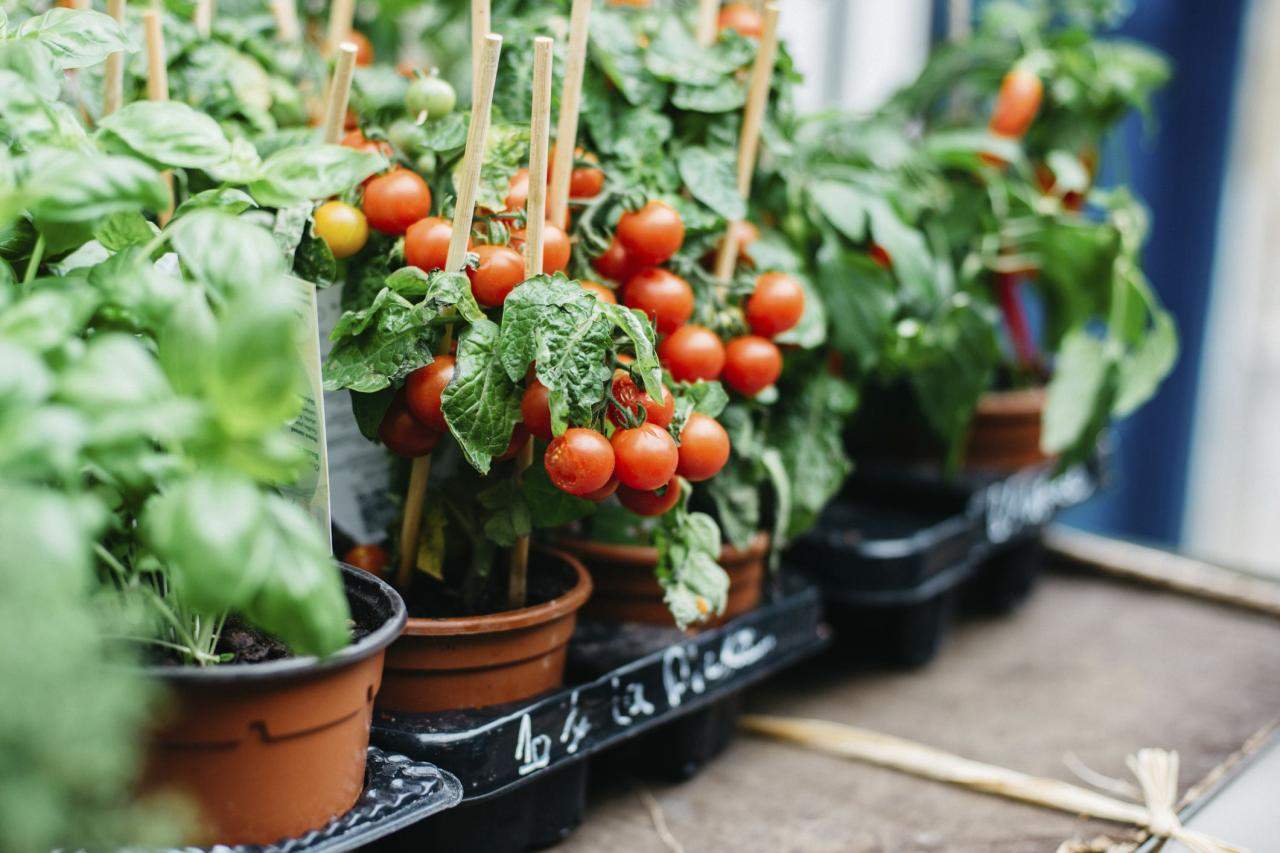
Container gardening offers the opportunity to maximize space and yields by implementing succession planting and season extension techniques. By understanding these concepts, you can enjoy a continuous harvest of fresh vegetables throughout the growing season.
Succession Planting for Continuous Harvests
Succession planting involves staggering your plantings at regular intervals to ensure a continuous supply of vegetables. As soon as one crop is harvested, another is ready to take its place. This method allows you to make the most of your container space and enjoy a steady stream of fresh produce.
- Start by creating a planting schedule based on the maturity dates of different vegetables.
- Harvest crops like lettuce, radishes, and spinach early to make room for heat-loving plants like tomatoes and peppers.
- Consider fast-growing varieties for quick turnover and continuous harvests.
Extending the Growing Season in Container Gardening
Extending the growing season in container gardening allows you to enjoy fresh vegetables beyond the typical growing period. With the right techniques, you can protect your plants from frost and cold temperatures, ensuring a longer harvest window.
- Use season-extending tools like row covers, cold frames, or cloches to protect plants from frost and cold winds.
- Position containers in sunny, sheltered spots to maximize warmth and light exposure.
- Consider using heat-absorbing materials like black containers or mulch to retain warmth in cooler months.
Planning and Implementing Succession Planting in Small Spaces
Even in small spaces, you can successfully plan and implement succession planting to maximize your harvest. With careful planning and organization, you can make the most of your container garden and enjoy a variety of fresh vegetables throughout the season.
- Choose compact varieties or dwarf plants that are well-suited for container growing.
- Opt for vegetables with different maturity dates to ensure a steady supply of produce.
- Utilize vertical space by growing vining plants like cucumbers or peas on trellises or stakes.
Last Word
In conclusion, mastering the art of container gardening offers a rewarding experience for vegetable enthusiasts of all levels. By implementing these 10 tips, you can transform your home into a flourishing garden oasis, providing fresh produce for your culinary creations. Embrace the joy of gardening and witness the bountiful harvests that await you with each container carefully nurtured.
